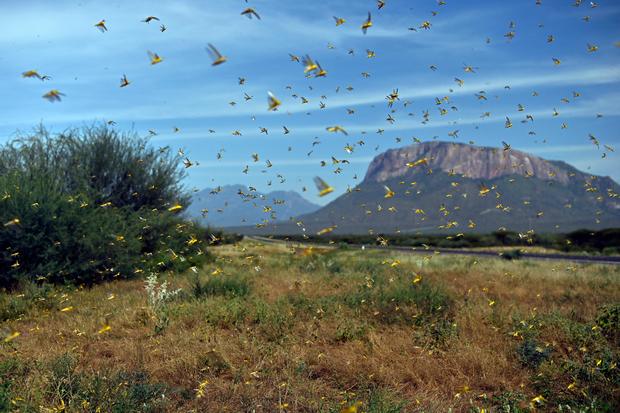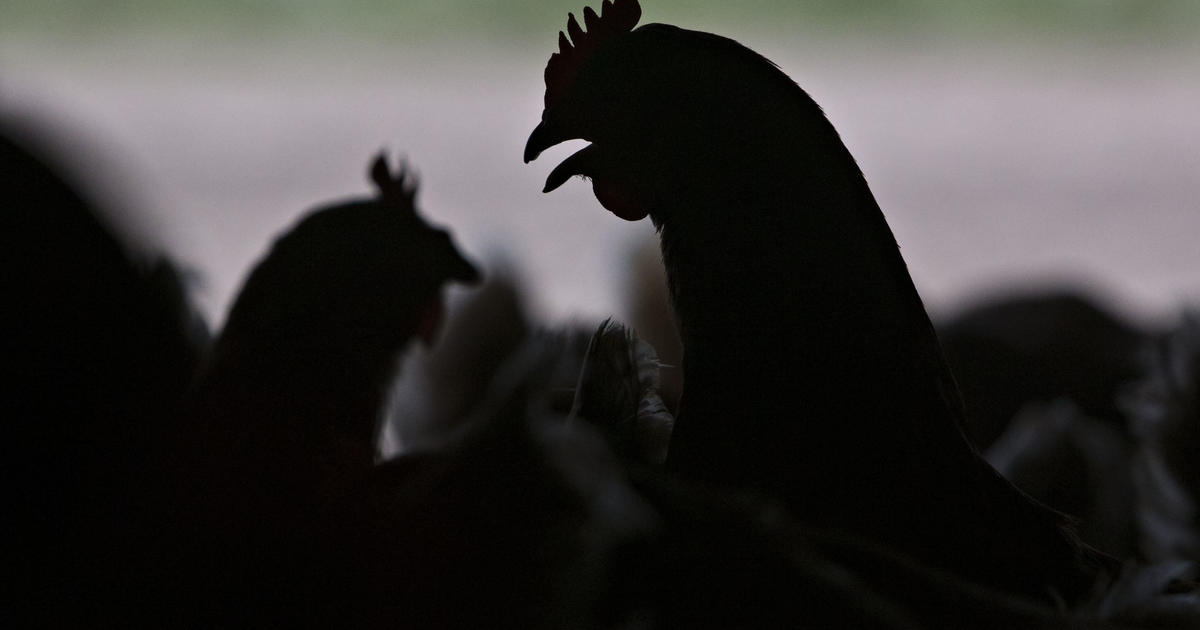Worst locust outbreak in decades ravages East Africa
Locust swarms have taken over parts of eastern Africa. The insects are rapidly eating the only source of food for many people in a region that is already food insecure.
The crop devastation has prompted the United Nations to appeal for $76 million in aid to combat the swarms and "prevent a humanitarian crisis." The UN has raised about $15 million so far.
Locusts are similar to grasshoppers, but differ in that they have the ability to change their behavior and can migrate over large distances. The swarms over the Horn of Africa are made up of "desert locusts," which are known for forming swarms that can be highly dense and mobile, according to the UN's Food and Agriculture Organization desert locust information center.
"The Desert Locust upsurge represents an unprecedented threat to food security and livelihoods and has the potential to become a regional plague that could lead to further suffering and displacement," reads the organization's appeal for aid.
The UN is stressing that it needs the money immediately, reports CBS News foreign correspondent Debora Patta.
"They're making no bones about it, they need that money now," Patta said from Johannesburg, South Africa. "It's the worst (locust outbreak) in 70 years for Kenya, and a quarter of a century for Somalia and Ethiopia."
Officials have warned that the insects could increase 500-fold by June if not contained quickly, Patta said. If action isn't taken, the swarms could also migrate to other parts of Africa — and even beyond the continent.
The idea is to spray the locusts aerially while they're still young, and before the population booms.
"We need to act immediately because the locusts don't wait, they will come and they will destroy," said Maria Helena Semedo, FAO Deputy Director-General for Climate and Natural Resources, in the appeal. "We need to tackle the emergency but we need to think about livelihoods and the long-term."
Even before the locust outbreak, over 20 million people in East Africa faced high levels of food insecurity due in part to harsh climate conditions, such as drought and flooding.
The desert locust is considered the most destructive migratory pest in the world, according to the FAO. A small swarm of locusts can consume enough food for 35,000 people. Farmers are complaining that about 90% of their crops have already been destroyed. The locusts are now moving towards Uganda and South Sudan, a country that is already under significant strain from food insecurity.
"This is a very rare phenomena, but once it does occur, it becomes extremely threatening to food securities, livelihoods, pastures — and of course with pastures, if herders have to move animals into new areas, this can be sources of conflict," said Keith Cressman, the FAO's Senior Agriculture Officer.
While the swarms appear almost biblical, there is a clear suspect for the cause of the outbreak: the changing climate. Unusually wet and rainy seasons has contributed to the number of locusts, which thrive after rainy weather, Patta reports.
The insects grow in size extremely fast, but only live three to five months. Within that short lifespan, however, a locust population can explode if left unchecked. The swarms have grown so big that one spotted in Kenya contained about 200 billion individual locusts, occupying a space in the sky three times the size of New York City.
Climate experts have warned that unpredictable weather will continue in the Horn of Africa, making it very difficult to predict when the locusts will breed again in such quantities.
The typical locust season ends around June — when drier conditions naturally return — but action is needed sooner. "By April it will be too late," Patta said.
Swarms were first spotted about a year and a half ago on the Arabian peninsula. By July of last year, they were reported in Yemen. Once the swarms arrived in Yemen, the FAO warned that if preventative measures weren't put in place, the insects would migrate to Kenya next.
Locusts can move about 90 miles in just one day.
According to the FAO, a new generation of locusts is expected to hatch in February, and new swarms are expected in early April. If they are not controlled soon, more vulnerable countries will be targeted next.
"That would coincide with the next season of planting. At that time, the seasonal winds will have shifted to the north, which is likely to allow the newly formed swarms in Kenya to reinvade Ethiopia and Somalia as well as to migrate to new areas of South Sudan and Sudan," according to the FAO appeal.
"In South Sudan, where food insecurity is already at an emergency level in many parts of the country, the Desert Locusts could wipe out pastures and crops causing the deterioration of an already alarming situation."




